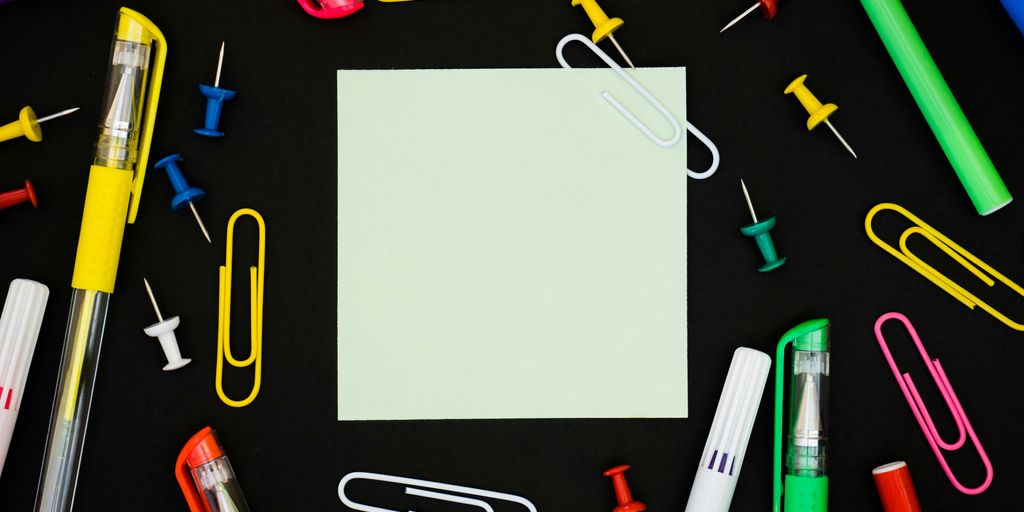Getting plurals right in English can feel tricky. It’s not always just adding an ‘s’ to the end of a word. There are lots of different rules, and then there are the words that just do their own thing. This guide is here to help you get a handle on all of it. We’ll go over the basic stuff, the common rules, and even those weird words that don’t seem to follow any rules at all. By the end, you’ll have a better idea of how to use plural training to make your writing and speaking much clearer.
Key Takeaways
- Plural training helps you understand how to make words mean ‘more than one’.
- Most words just add ‘s’ to become plural, but many words have special rules.
- Some words change their spelling a lot when they become plural, like ‘mouse’ to ‘mice’.
- Practicing regularly, maybe with flashcards or writing, makes plural training easier.
- Getting help from a tutor or using online tools can really speed up your plural training progress.
Understanding the Fundamentals of Plural Training
Defining Plural Nouns
Okay, so what are plural nouns? Simply put, they’re words that represent more than one of something. It’s a pretty basic concept, but it’s super important to get right. Think about it: you wouldn’t say "I have one cats," right? You’d say "I have cats." That’s the difference. Plural nouns indicate quantity, showing that we’re talking about multiple items, people, places, or ideas. It’s the foundation of clear communication, and messing it up can lead to some seriously confusing sentences. It’s more than just adding an ‘s’, though; there are a bunch of rules and exceptions we’ll get into later.
The Importance of Plural Training in Communication
Why bother learning all this plural stuff? Well, imagine trying to explain something without using plurals correctly. It would be a total mess! Effective communication relies on accuracy, and that includes using the right plural forms. If you say "I saw three bird" instead of "I saw three birds," people might understand what you mean, but it sounds weird and unprofessional. Plus, in writing, incorrect plurals can make your work look sloppy and undermine your credibility. Think of it this way: mastering plurals is like having a secret weapon for clear and precise expression. It helps you avoid misunderstandings and improve language proficiency.
Common Pitfalls in Plural Usage
Even native English speakers mess up plurals sometimes. One common mistake is adding an ‘s’ to words that don’t need it, like saying "informations" instead of "information." Another is using the singular form when the plural is required, such as "I have a sisters" instead of "I have sisters." Then there are those tricky irregular plurals, like "child" becoming "children" and "mouse" becoming "mice." It’s easy to get tripped up! Here’s a quick rundown of some frequent errors:
- Adding ‘s’ to uncountable nouns (e.g., "furnitures")
- Using singular verbs with plural subjects (e.g., "They is going")
- Confusing similar-sounding singular and plural forms (e.g., "advice" vs. "advices")
Being aware of these common pitfalls is the first step in avoiding them. With practice and attention to detail, you can learn to spot and correct these errors in your own writing and speech.
Mastering Regular Pluralization Rules
Okay, so you’ve got the basics down. Now it’s time to really nail those plural forms that follow the standard rules. It’s not always as simple as slapping an ‘s’ on the end, but with a little practice, you’ll be a pro in no time. Let’s break it down.
Adding ‘s’ for Most Nouns
This is the bread and butter of pluralization. For the majority of nouns in English, making them plural is as easy as adding an ‘s’ to the end. Think of it like this: one cat becomes many cats, one book becomes a stack of books, and one car turns into a whole parking lot of cars. It’s straightforward, but it’s the foundation upon which all other plural rules are built. It’s good to get this plural mastery down first.
Nouns Ending in ‘s’, ‘x’, ‘z’, ‘ch’, ‘sh’
Things get a little trickier when nouns end in certain sounds. If a noun ends in ‘s’, ‘x’, ‘z’, ‘ch’, or ‘sh’, you usually add ‘es’ to form the plural. This is because just adding an ‘s’ would make the word difficult to pronounce. For example:
- Bus becomes buses
- Box becomes boxes
- Watch becomes watches
- Dish becomes dishes
It might seem a little weird at first, but say the words out loud, and you’ll hear why the extra ‘e’ is needed. It’s all about making the words flow smoothly. This is one of the common rules to remember.
Nouns Ending in ‘y’ Preceded by a Consonant
Here’s another rule that can trip people up. When a noun ends in ‘y’ and the letter before the ‘y’ is a consonant (like b, d, f, g, etc.), you change the ‘y’ to ‘i’ and add ‘es’. So, ‘baby’ becomes ‘babies’, ‘city’ becomes ‘cities’, and ‘story’ becomes ‘stories’.
However, if the letter before the ‘y’ is a vowel (a, e, i, o, u), you just add ‘s’ as usual. For example, ‘boy’ becomes ‘boys’ and ‘day’ becomes ‘days’. It’s all about that vowel-consonant combo before the ‘y’.
Nouns Ending in ‘o’
The rule for nouns ending in ‘o’ is a bit of a mixed bag. Some nouns take an ‘es’ ending, while others just take an ‘s’. There isn’t always a clear reason why, so it often comes down to memorization. Here are a few examples:
- Potato becomes potatoes
- Tomato becomes tomatoes
- Hero becomes heroes
But then you have:
- Photo becomes photos
- Piano becomes pianos
- Radio becomes radios
Unfortunately, there’s no easy trick to knowing which ones take ‘es’ and which ones just take ‘s’. When in doubt, check a dictionary. It’s one of those things that just takes practice and writing exercises to get right.
Navigating Irregular Plural Forms

Regular pluralization is nice and all, but English just loves to throw curveballs. That’s where irregular plurals come in. They don’t follow the standard rules, and honestly, sometimes they don’t follow any rules at all! It’s mostly about memorization and getting a feel for what sounds right (which, let’s be honest, can be super subjective).
Vowel Changes in Plural Nouns
Some nouns change their vowel sounds when they become plural. This is one of the most common types of irregular pluralization. Think about words like "foot" becoming "feet" or "tooth" becoming "teeth." There’s no real logic to it; you just have to learn them. Here are a few examples:
- Man -> Men
- Woman -> Women
- Goose -> Geese
- Mouse -> Mice
Nouns with No Change in Plural Form
Believe it or not, some nouns stay exactly the same whether they’re singular or plural. These are tricky because you have to rely on context to know if you’re talking about one or many. A classic example is "sheep." You can have one sheep or a hundred sheep, and the word doesn’t change. Other examples include:
- Deer
- Fish (though "fishes" is sometimes used to refer to multiple species)
- Series
- Species
It’s easy to make mistakes with these, so pay attention to the surrounding words in a sentence. For example, "The plural training was effective" vs. "The series are popular."
Foreign Plurals and Their Origins
English has borrowed words from all over the world, and sometimes those words keep their original plural forms. This is especially common with words from Latin and Greek. For example, "alumnus" (a male graduate) becomes "alumni" in the plural. These can be tough because they often sound a bit fancy or old-fashioned. Here are some more examples:
| Singular | Plural |
|---|---|
| Cactus | Cacti |
| Radius | Radii |
| Curriculum | Curricula |
| Phenomenon | Phenomena |
Some words even have two acceptable plural forms, one English and one foreign. For instance, you can say "formulas" or "formulae." It’s good to know both, but using the English plural is usually safer in everyday conversation. Another example is "index", which can be "indexes" or "indices". And don’t forget about words ending in ‘um’ which can get ‘a‘, ‘i‘, or the ‘s‘ of the English plural.
Advanced Plural Training Concepts
Pluralizing Compound Nouns
Okay, so compound nouns can be a bit tricky. The general rule is to pluralize the main word of the compound noun. For example, "mother-in-law" becomes "mothers-in-law." But what if there isn’t a clear ‘main’ word? That’s when things get interesting. Sometimes, you pluralize the last word, like "cupful" becoming "cupfuls." It really depends on the specific noun and how it’s commonly used. Here’s a quick breakdown:
- If the main word is first, pluralize it: editors-in-chief
- If there’s no clear main word, pluralize the end: forget-me-nots
- For compounds written as one word, usually just add ‘s’: toothbrushes
Plural Forms of Names and Acronyms
Pluralizing names and acronyms is something people often get wrong. For names, you generally just add an ‘s’ to the end. So, if you’re talking about the Smith family, you’d say "the Smiths." If a name ends in ‘s’, ‘x’, ‘ch’, ‘sh’, or ‘z’, you add ‘es’ – like "the Joneses." Acronyms are even simpler; just add an ‘s’. No apostrophes needed! For example, "CDs" or "PhDs." Using apostrophes can make it look like you’re trying to show possession, which is not what you want. It’s a common mistake, but easy to fix once you know the rule. You can find more information about AI in recruiting online.
Collective Nouns and Their Plurality
Collective nouns are words that refer to a group of things or people, like "team," "family," or "committee." The tricky part is that they can be singular or plural, depending on how you’re using them. If the group is acting as a single unit, you treat the noun as singular. For example, "The team is playing well." But if the members of the group are acting individually, you treat the noun as plural. For example, "The team are arguing about their bonuses." In American English, it’s more common to treat collective nouns as singular, but in British English, it’s more common to treat them as plural when emphasizing individual actions. Here’s a table to illustrate:
| Collective Noun | Singular Usage | Plural Usage (More Common in British English) | Example |
|---|---|---|---|
| Team | The team is winning. | The team are changing in the locker room. | The team is united. / The team are divided. |
| Family | The family is happy. | The family are deciding on their gifts. | The family is large. / The family are busy. |
| Committee | The committee has made a decision. | The committee have different opinions. | The committee has voted. / The committee have disagreed. |
Effective Strategies for Plural Training
Okay, so you want to get better at plurals? It’s not just about slapping an ‘s’ on everything. There are some tricks and techniques that can really help. Let’s look at some ways to make plural training more effective.
Utilizing Flashcards and Visual Aids
Flashcards aren’t just for vocabulary! They can be super helpful for memorizing irregular plurals. Make a set of flashcards with the singular form on one side and the plural form on the other. Visual aids, like charts or diagrams showing the different pluralization rules, can also be really useful, especially for visual learners. You can even use pictures to represent the nouns, making it more engaging. For example, a picture of one mouse on one side and a picture of multiple mice on the other. This is a great way to teach singular and plural nouns at home.
Engaging in Practical Writing Exercises
Theory is great, but practice is where it really clicks. Try writing short stories or paragraphs that specifically require you to use a variety of plural nouns. The more you write, the more natural it will become. Start with simple sentences and gradually increase the complexity. You could even try rewriting existing texts, changing singular nouns to plural and vice versa, to see how it affects the meaning. This helps you understand the context and usage better. For example, instead of writing "The cat sat on the mat," try "The cats sat on the mats." See how that changes things?
Leveraging Online Resources and Grammar Guides
The internet is your friend! There are tons of websites and grammar guides that can help you with plural training. Many sites offer interactive quizzes and exercises that give you instant feedback. Plus, you can find explanations of all the different pluralization rules, including the tricky irregular ones. Don’t be afraid to use these resources to supplement your learning. A good grammar guide can be a lifesaver when you’re unsure about a particular plural form. There are even apps that can help you practice on the go. It’s all about finding what works best for you.
Enhancing Plural Training Through Practice
Okay, so you’ve got the rules down, you think you know your irregulars, but can you actually use plurals correctly without thinking too hard? That’s where practice comes in. It’s like learning to ride a bike – you can read all about it, but you won’t get anywhere until you actually get on and pedal. Let’s talk about how to make that practice effective.
Daily Practice Drills for Plural Mastery
Short, focused practice every day is way more effective than cramming once a week. Think of it like this: a little bit of watering every day keeps the plant alive, while one big drenching might drown it. Here are some ideas for daily drills:
- Sentence Completion: Find sentences with missing nouns and fill them in, making sure to use the correct plural form. You can find these online or make them up yourself.
- Noun Transformation: Take a list of singular nouns and write out their plural forms. Time yourself and try to beat your previous score each day.
- Error Identification: Read short paragraphs with intentional plural errors and correct them. This helps you train your eye to spot mistakes.
Contextual Learning with Real-Life Examples
Rules are great, but seeing how plurals work in actual sentences and situations is even better. It’s about understanding the why behind the what. Here’s how to get that context:
- Read Widely: Pay attention to how plurals are used in books, articles, and even social media posts. Notice the different contexts and how the plural forms fit in.
- Listen Actively: When you’re listening to podcasts or watching videos, focus on the plural nouns that are used. Try to repeat the sentences in your head to reinforce the correct forms.
- Create Your Own Examples: Write your own sentences and paragraphs using a variety of plural nouns. The more you write, the more natural it will become. For example, the bachelor of journalism program offers robust training.
Identifying and Correcting Plural Errors
We all make mistakes, it’s part of learning. The key is to learn from those mistakes and not repeat them. Here’s how to get better at spotting your own plural errors:
- Keep a Mistake Log: Whenever you make a plural error, write it down in a notebook or on your computer. Include the correct form and an explanation of why you made the mistake.
- Proofread Carefully: Before you submit any writing, take the time to proofread it carefully, paying special attention to plural nouns. Read your work aloud to catch errors that you might miss when reading silently.
- Ask for Feedback: Have a friend, family member, or teacher review your writing and point out any plural errors they find. A fresh pair of eyes can often catch mistakes that you’ve overlooked.
The Role of Personalized Plural Training

Let’s be real, sometimes those general grammar rules just don’t cut it. Everyone learns differently, and when it comes to something like plural nouns, a one-size-fits-all approach can leave some people behind. That’s where personalized plural training comes in. It’s about tailoring the learning experience to fit individual needs and learning styles. Think of it like getting a custom-made suit instead of something off the rack – it just fits better.
Benefits of One-on-One Tutoring for Plural Training
One-on-one tutoring can make a huge difference. It’s not just about having someone explain the rules; it’s about having someone who can identify why you’re struggling. Maybe you’re a visual learner who needs diagrams, or maybe you learn best by doing. A tutor can adapt their approach to suit you. Plus, you get immediate feedback, which is way more effective than waiting for a grade on a test. You can also ask all those "dumb" questions you might be too embarrassed to ask in a group setting. It’s a safe space to mess up and learn from it. Consider exploring grammar training programs for additional support.
Customized Learning Plans for Individual Needs
A customized learning plan is all about targeting your specific weaknesses and building on your strengths. It starts with an assessment to figure out where you’re at. Then, the plan is designed to address those areas. For example, if you consistently mess up irregular plurals, the plan will focus on those. If you’re good with adding "-s" but struggle with nouns ending in "-y", that’s where the attention will go. It’s efficient and effective because you’re not wasting time on stuff you already know. Here’s a simple example of how a plan might be structured:
| Week | Focus Area | Activities |
|---|---|---|
| 1 | Regular Plurals | Flashcards, simple sentence writing |
| 2 | Irregular Plurals | Memory games, fill-in-the-blank exercises |
| 3 | Nouns Ending in "y" | Rule explanations, sentence correction |
| 4 | Compound Nouns | Practice with complex sentences, quizzes |
Accelerated Progress with Expert Guidance
Let’s face it, learning grammar can be slow and frustrating. But with expert guidance, you can speed things up. An experienced tutor or instructor knows the common pitfalls and can provide strategies to avoid them. They can also offer tips and tricks that you won’t find in a textbook. It’s like having a shortcut to success. Plus, having someone to hold you accountable can be a big motivator. Instead of procrastinating, you’re more likely to stay on track and see results faster. Don’t forget to practice daily practice drills to reinforce your learning.
Wrapping Things Up
So, that’s pretty much it for plural training. It might seem like a lot at first, with all the different rules and words that don’t follow them. But honestly, the more you practice, the easier it gets. Just keep at it, and don’t worry too much about messing up. Everyone does. The main thing is to keep trying and learn from those little slip-ups. You’ll get there, no problem.
Frequently Asked Questions
What exactly are plural nouns?
Plural nouns are words that show there’s more than one of something. For example, ‘cat’ is one, but ‘cats’ means many. They help us talk about groups of things or people.
How do I usually make a word plural?
Most of the time, you just add an ‘s’ to the end of a word, like ‘dog’ becomes ‘dogs’. But some words are tricky and change in different ways, like ‘child’ becoming ‘children’.
What makes a plural noun ‘irregular’?
Irregular plurals don’t follow the normal ‘add an s’ rule. They change their spelling in unique ways, or sometimes don’t change at all. Think ‘mouse’ to ‘mice’ or ‘sheep’ staying ‘sheep’.
Why is it important to learn about plural nouns?
It’s super important! Using plurals correctly makes your sentences clear and easy to understand. If you say ‘I have two apple’, people might get confused. ‘I have two apples’ is much better.
What’s the best way to get better at using plural nouns?
Practice is key! Try using flashcards for the tricky ones, write sentences using different plural words, and read a lot. The more you see and use them, the easier it gets.
Can a tutor help me learn plural nouns?
Yes, it can really help! A tutor can explain things in a way that makes sense just for you. They can also spot your mistakes and give you special exercises to help you improve faster.














